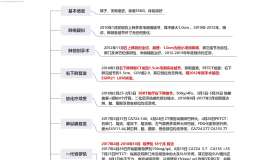Concomitant EGFR mutation and EML4-ALK gene fusion in non-small cell lung cancer. Print this page
7 I! ^) ~$ T2 X6 u& [# P
. W- a1 v7 v5 i: o1 B+ J; z, N) W) m$ R1 P4 A0 t+ ~( X& t2 k
Sub-category:
; s1 ]7 l: J$ ` b& E% c* [) f1 e- N6 iMolecular Targets
* O3 _$ V. B, }+ r
$ ^* \8 c: ^7 u3 G, m
$ G j0 j$ l% p+ O% o- G, ~Category:
7 X# F, w _- S4 b' b% OTumor Biology
% `+ c2 V1 ]$ P) A: P0 [8 A3 e5 o
2 y) B) C/ W, n" h1 ?0 c0 D! zMeeting:0 a, J+ \. r* B2 |$ \; O" w* ~
2011 ASCO Annual Meeting
9 [- _4 s! b" {1 d; V' P" r
. \% W1 E0 ]. [; d7 N2 |2 H: Y2 l9 m" [6 S
Session Type and Session Title:! v" g: l' E% N J ]' S6 X
Poster Discussion Session, Tumor Biology
% N2 i' ~/ `& J2 F1 F
; r+ r( R! s1 e$ q4 D5 t: X* N# e$ \! j" H. |* m r ?
Abstract No:6 \, f4 ]. D5 O) ~5 g* s. ?
10517 , b( V7 b2 B* m. @7 w: Y' r1 U
1 u& G1 }& Q- j w8 F
) U2 S/ J5 G, F% T2 p4 k8 N& |Citation:
4 c: I2 q; Z, f0 a8 A, F' M. \J Clin Oncol 29: 2011 (suppl; abstr 10517) 6 w6 J5 v$ j8 A4 {2 m2 {
% g: z4 m% w8 b& S
, z A, ~# j8 \; J6 I1 z9 ?8 L+ l WAuthor(s):% q# v& C( j3 U# s4 A* _2 N2 @
J. Yang, X. Zhang, J. Su, H. Chen, H. Tian, Y. Huang, C. Xu, Y. L. Wu; Guangdong Lung Cancer Institute, Guangdong General Hospital & Guangdong Academy of Medical Sciences, Guangzhou, China; Guangdong Lung Cancer Institute, Medical Research Center of Guangdong General Hospital, Guangzhou, China; Guangdong Lung Cancer Institute, Guangzhou, China; Guangdong Lung Cancer Institute, Guangdong General Hospital & Guangdong Academy of Medical Sciences, Guangzhou, China
. ?. h4 |1 A& A* n$ J' L& a/ k% _: A: P7 l* c) v$ J# R
1 v3 l: M$ S1 ^8 w5 S; u) W
' ]2 M2 d7 z' }! _: E5 s
Abstracts that were granted an exception in accordance with ASCO's Conflict of Interest Policy are designated with a caret symbol (^) here and in the printed Proceedings.
9 `; I, z$ q: q7 g+ |8 e5 }, M& @: `5 z5 ` E) r! x( v" r
Abstract Disclosures- i2 o5 K9 V4 r. n
- b/ W b7 G2 z, m7 C4 ~6 ~4 F* gAbstract:
3 z+ K6 r" L0 W
) M" H% z9 M2 J x( f. X4 `2 P
+ F! ]% j" |8 OBackground: The fusion of the anaplastic lymphoma kinase (ALK) with the echinoderm microtubule-associated protein-like 4 (EML4) and epidermal growth factor receptor (EGFR) mutations are considered mutually exclusive. Advanced non-small cell lung cancer (NSCLC) patients with EML4-ALK did not benefit from EGFR tyrosine kinase inhibitors (TKIs). Methods: Multiplex reverse transcriptase-polymerase chain reaction (RT-PCR) followed by sequencing was performed for EML4-ALK fusion status detection. EGFR and KRAS mutations were determined by direct DNA sequencing. Positive results of EML4-ALK fusion were also confirmed by RACE-coupled PCR sequencing. Results: From April 2010 to January 2011, 412 patients (398 with NSCLC; 14 with SCLC) were tested for mutation status of EGFR, KRAS and EML4-ALK respectively. Frequency of EML4-ALK fusion was 10.6% (42/398) in NSCLC patients. No patients with SCLC were found to have positive EML4-ALK fusion. Frequency of concomitant EGFR and EML4-ALK gene mutations was 1.0% (4/398) in NSCLC patients, and their variants of EML4-ALK gene mutations were Variant 1 (3 patients) and Variant 6 (1 patient); being never smokers, all of them were diagnosed with advanced (3 with stage †W and 1 with stage IIIB) adenocarcinoma harbouring wild type KRAS. Two female stage †W patients with double gene mutations (1 with L858R and Variant 1; 1 with exon19 deletion and Variant 6) received first-line gefitinib which is one kind of EGFR TKIs and achieved partial response. Conclusions: Though being rare events, NSCLC patients harbouring concomitant EGFR mutation and EML4-ALK gene fusion are sensitive to first-line EGFR TKIs. Whether they could also benefit from ALK inhibition after failure to EGFR TKIs warranted further investigation.- Z3 Y+ s1 \9 p0 g
9 h) u6 x+ o s" U3 @8 i! B
/ F: N8 N {7 A- \9 L8 V& p. o |


